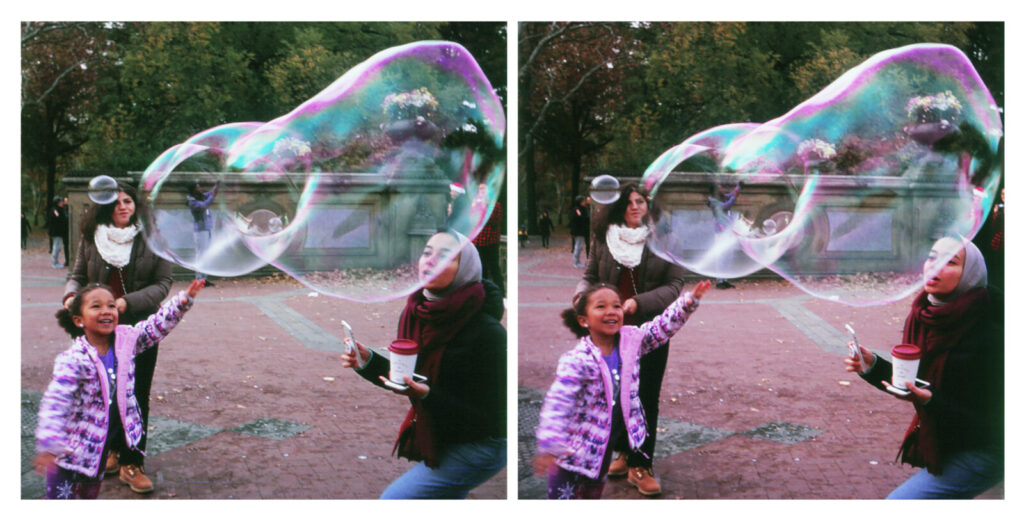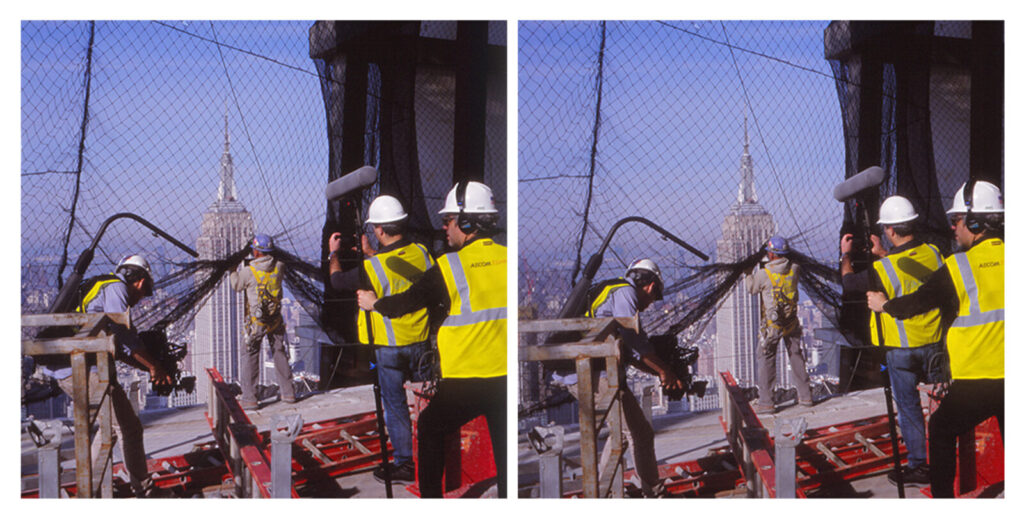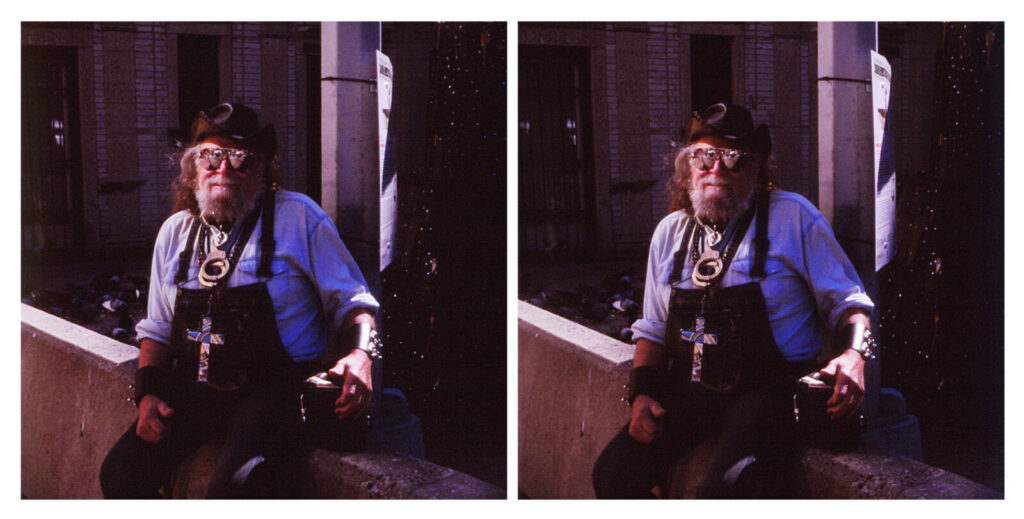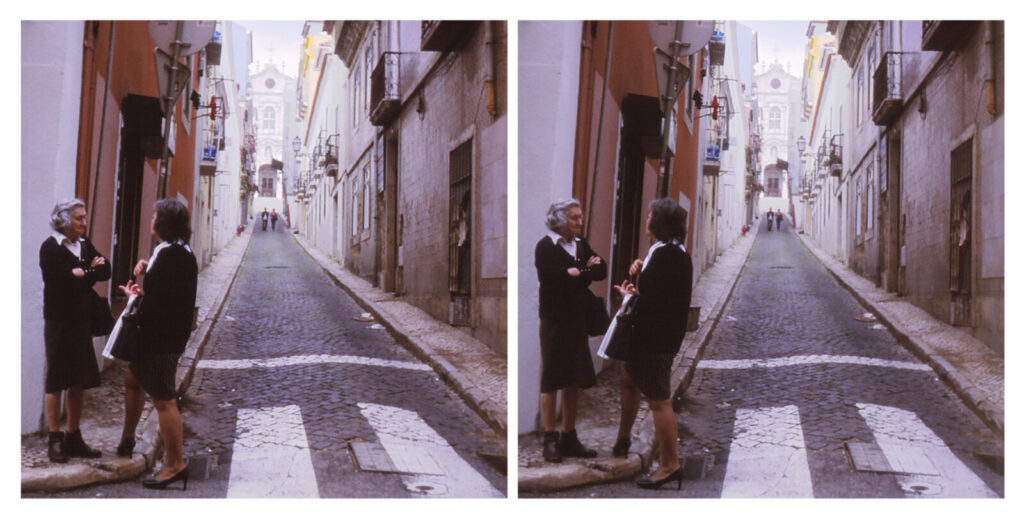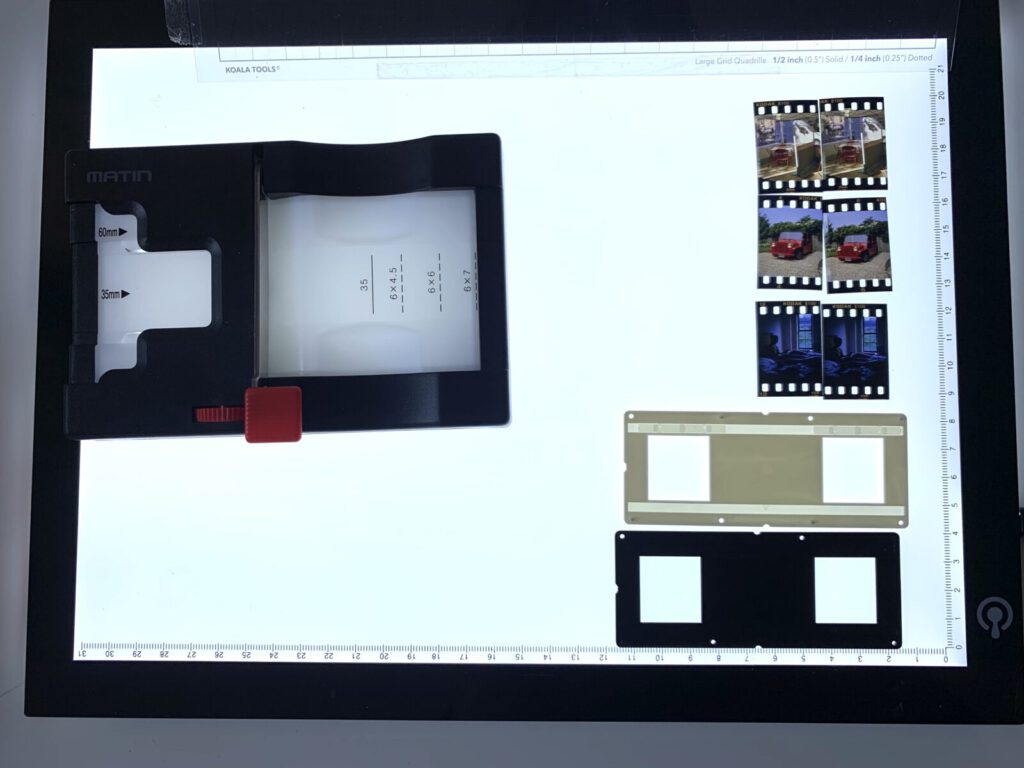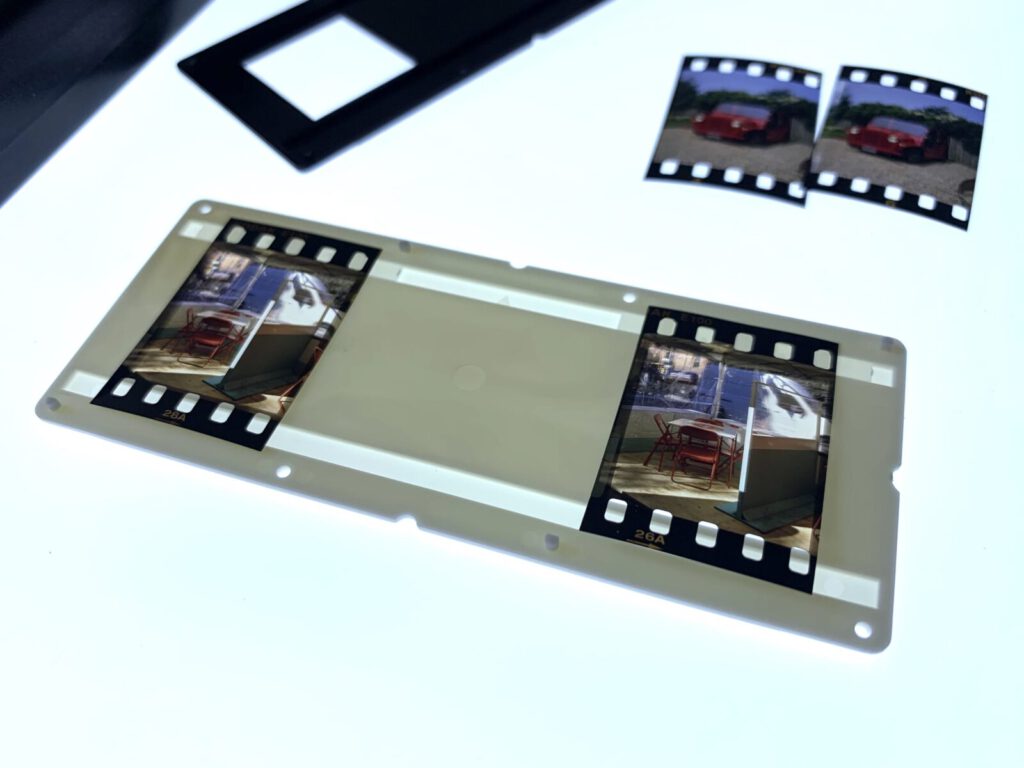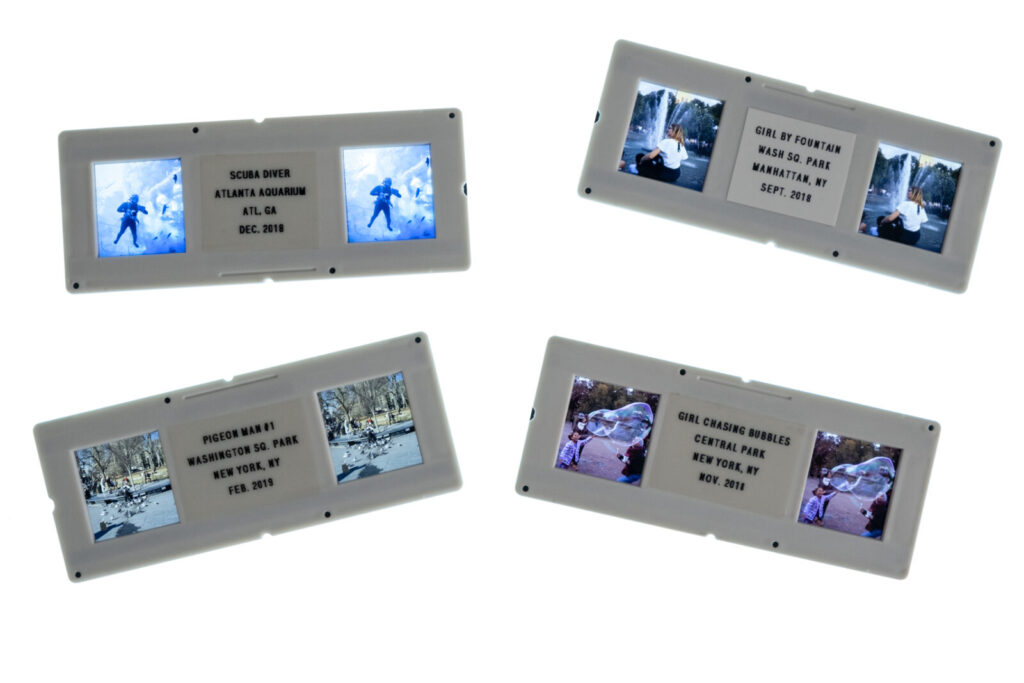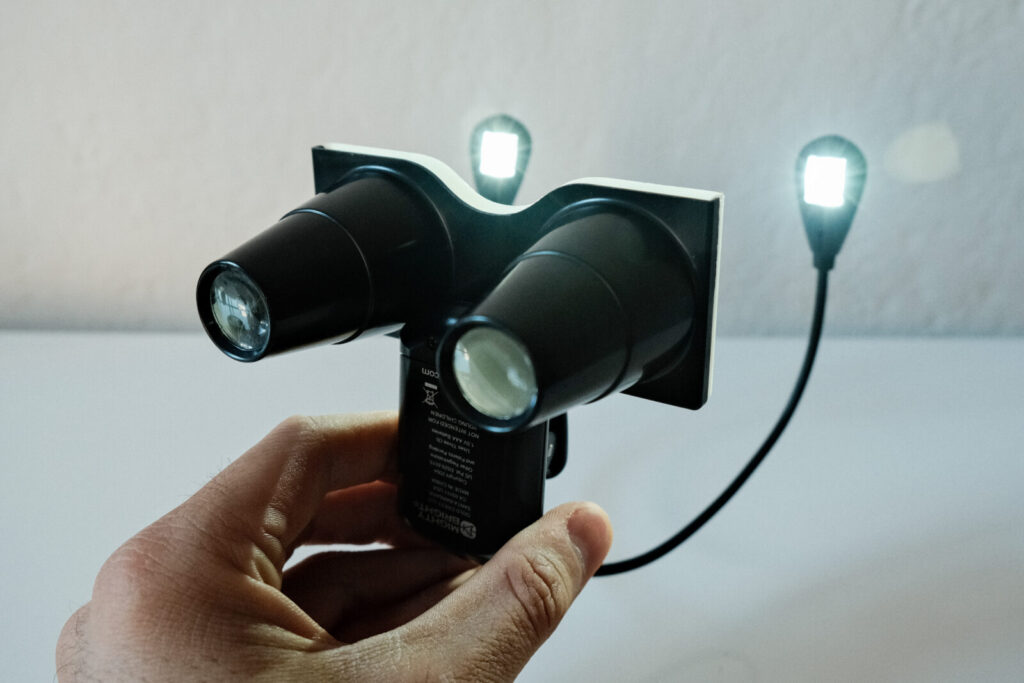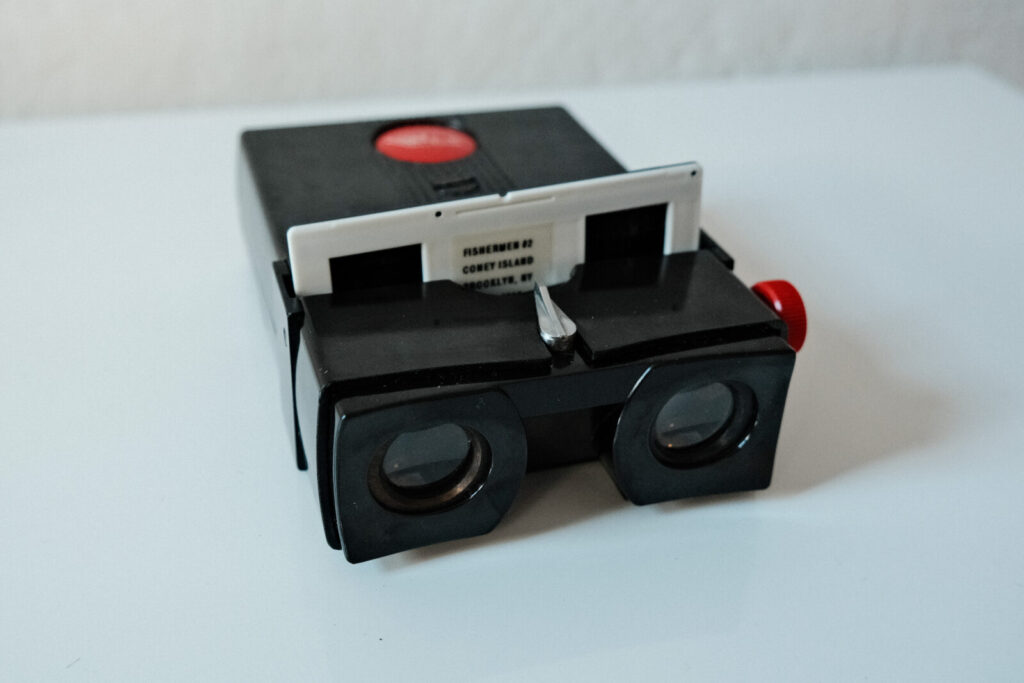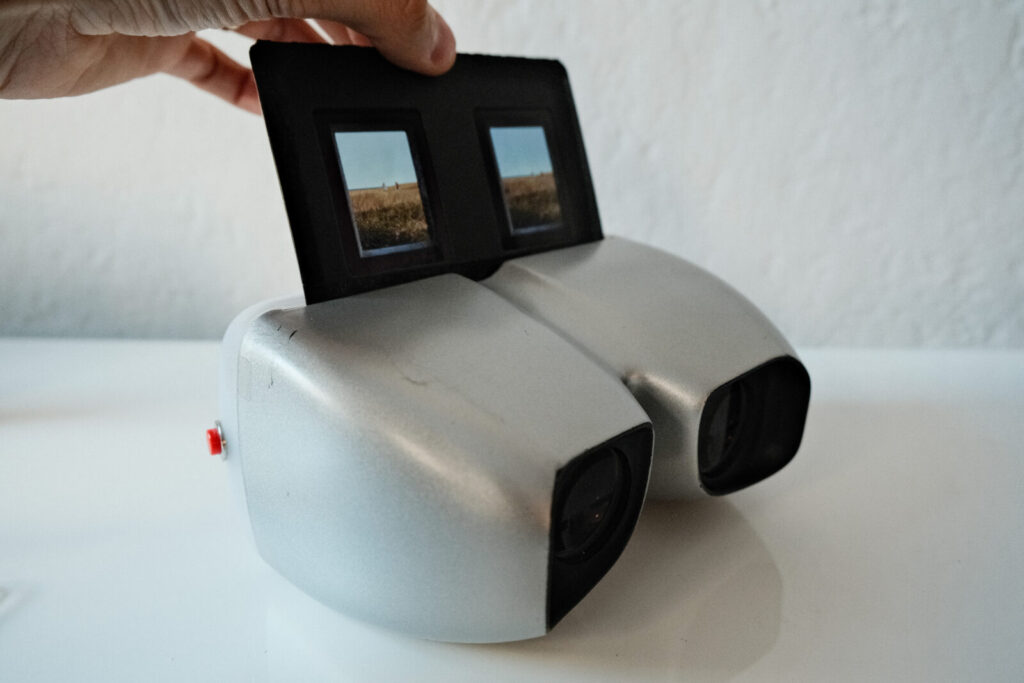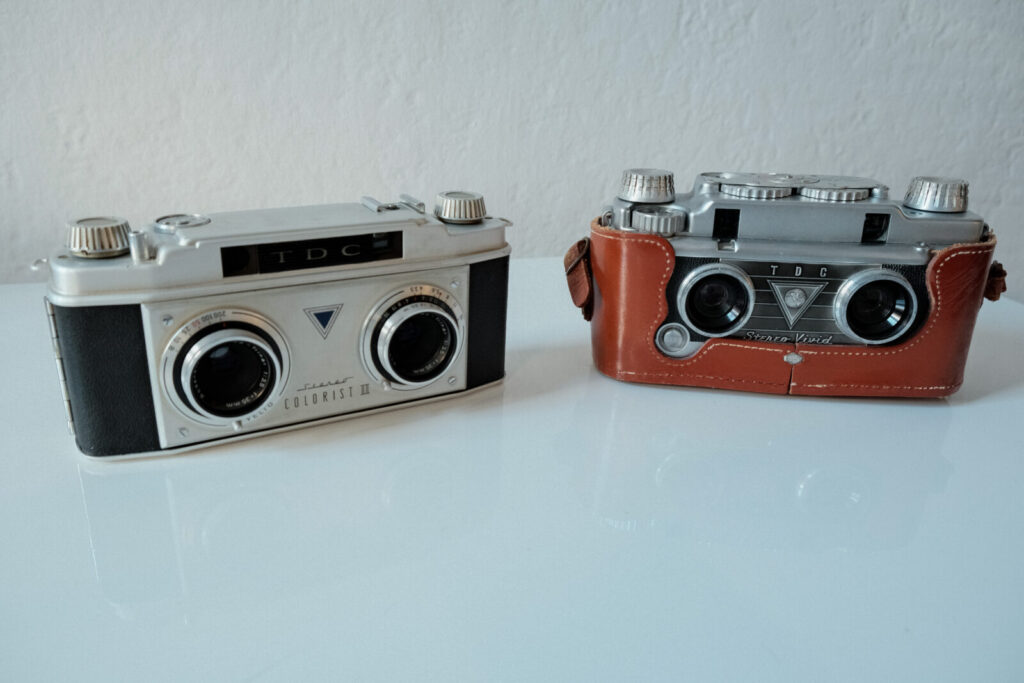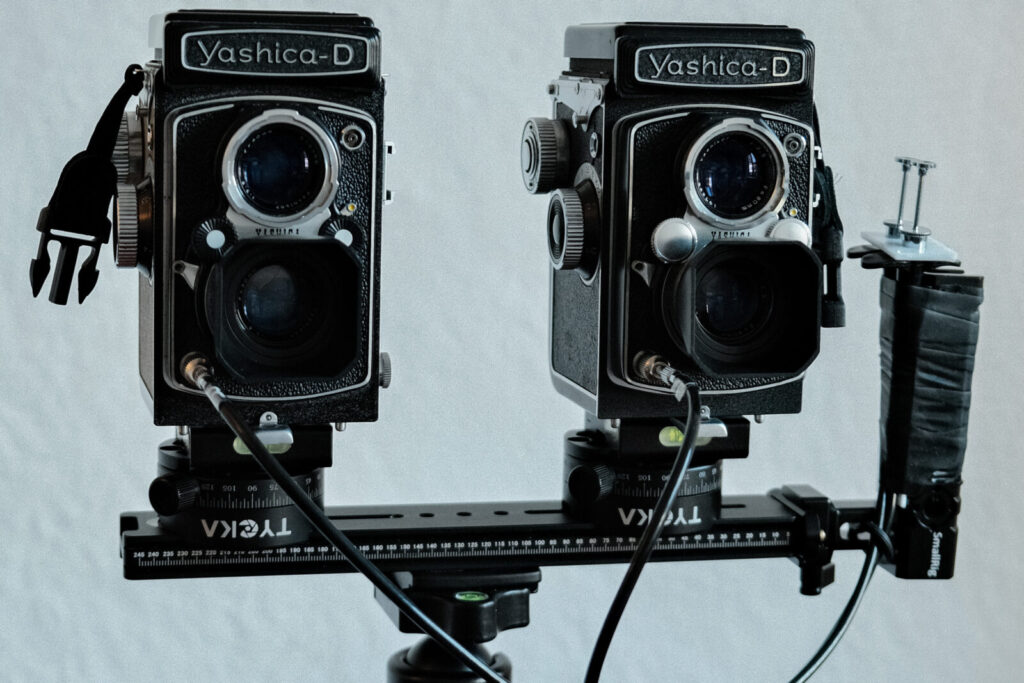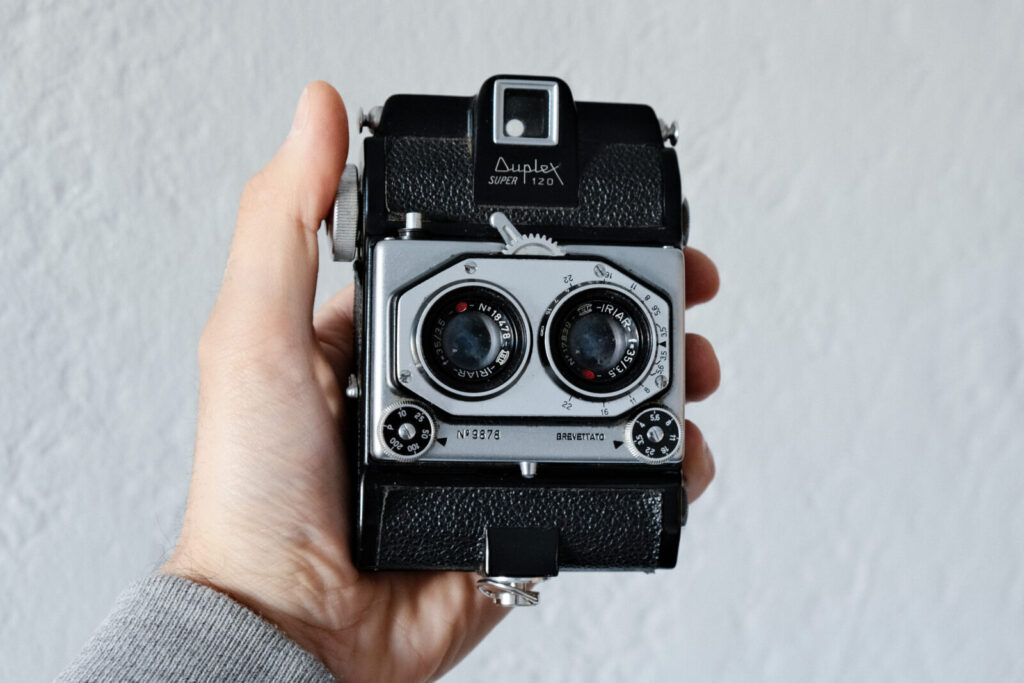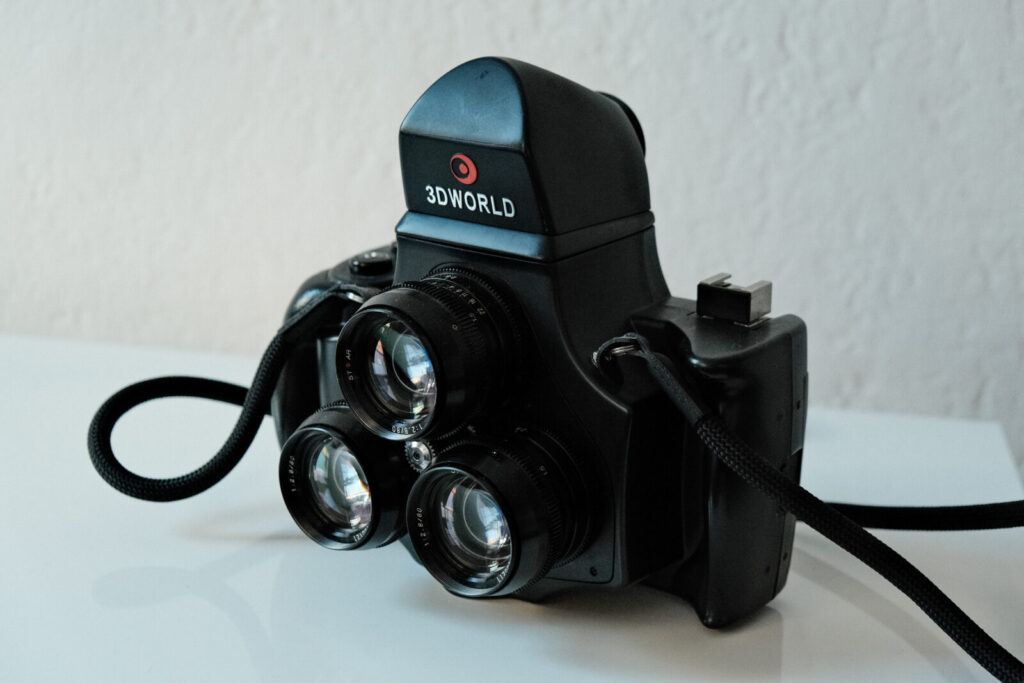A Plea for Analog Stereo Photography
written for the stereosite by Matt Infante, USA
I was first introduced to stereo photography a few years ago by a camera operator named Craig Haagensen, who shot with a 35mm stereo camera. After speaking with him and seeing a few of his slides, I was convinced making stereo photos on film was the way to go. It also made sense to me as I had already been shooting and developing photos on my own for a while. I’m not a purist by any means. I also understand it’s 2021 and I’m talking about shooting on film. From an educational standpoint though, the limitations it imposes forces you to learn the basics of exposure, composition and how to be more intentional with your artistic choices. Especially with stereo photography, every step of making and viewing an image is much more involved and expensive on film so you really have to ask yourself why you’re doing what you’re doing.
I personally love street photography and meeting people so as I’m walking around, I constantly ask how depth would add to a certain moment or scene. Sometimes it works and sometimes it doesn’t. But thinking in that way has naturally influenced what I pay attention to. I also shoot mainly with Kodak slide film. It is rated at 100 ISO, which means my day is planned around where the sun is going to be. Having a less sensitive film stock has forced me to observe different qualities of light during the day and gravitate towards parts of the city I otherwise might not normally visit. I sort of just follow the light and see how it plays off of buildings, windows, and crowds of people. I’ve grown to love shooting in harsh lighting conditions and in areas that have lots of contrast and reflections. I’ve even found a few pockets in New York City where at a certain time in the day, sunlight bounces off multiple windows of surrounding buildings, casting this unusual, artificial look to a street corner.
A prerequisite of making a good stereo photo in addition to an understanding of depth, composition and lighting is the precision that comes with the mounting process, which demands a level of commitment and attention to detail. For those who haven’t tried it, it will seem like a big time commitment but again this is also part of the appeal. Spending an hour or two mounting slides is definitely an exercise in humility as you reflect on all the things you wish you did right. As you get familiar with it, there’s a rhythm that develops with the tactile experience and it’s pretty relaxing. The secret is just taking the time to research the technical understanding, searching for the gear (mostly on eBay), asking questions from those who’ve been doing it for much longer, and being patient with the whole process until you end up with your first stereo slide. When I couldn’t find a piece of gear I was looking for or if it was too expensive at the time, I improvised.
For a year, I showed people slides with a cheap plastic Raydex viewer and a dual LED clip light and it worked great. If you’re handy, make your own cameras or viewers. Developing your own film is also probably cheaper in the long run, but I found a trusted lab and a New York apartment doesn’t accommodate the space for a dark room.
Below are some of the film cameras I shoot with. The 35mm Stereo TDC Vivid is an entry level camera that has a coupled rangefinder, which I find easier and faster to focus when walking around. It has its downsides like a maximum 1/100th shutter speed and an issue of slightly overlapping frames. But, it is cheap and easy to find online. The Colorist II is similar and has a slightly faster shutter speed which helps with scenes that have a lot of movement. The Stereo Realist is a great first camera as well. The dual Yashicas and the TL-120 are really rewarding to shoot with as they are medium format and viewing the larger frame size is quite something to experience. The ISO Duplex is fun because it’s really small and I can get closer to my subjects because of the narrower stereo base.
Overall, I think the learning curve is pretty steep and has been trial and error, resulting in mostly errors, wasted film, and sighs of disappointment. But that’s part of the process and it’s worth it to capture those moments that you feel really proud to share with people. I think in a time where a lot of our creative consumption takes place on a phone, it’s a refreshing and unusual experience for most people to be given a viewer and a tray of slides. It’s a form of photography that’s meant to be shared in order to enjoy and requires you to stop what you’re doing and give your full attention to it even for just a few minutes. The responses and encouragement I’ve gotten from others has been rewarding enough to continue pursuing it. I’m also grateful to have found a vast community online and on social media. My buddy Dave Ross, who has been a mentor in many ways, makes some pretty wild stereo photos and has been a great inspiration and source of guidance when I fall into a pit of despair about one of my cameras not working properly. I would encourage anyone interested in getting into stereo photography to start on film and see it through to your first mounted slide. You’ll learn a lot very fast. After that, see how you feel and build on it!
Matt Infante (New York City, USA)
I’m a photographer and filmmaker based in New York City and I have been taking stereo photos since 2018. My main role is working as a camera assistant on television and movies. Because of that, I love making images and experimenting with stereophotography has been very rewarding in that regard. The best feeling is sharing slides with someone and seeing their reaction of joy and wonder as they put their eyes to a viewer. I hope to continue to learn more and meet other talented stereographers along the way.
Instagram-profile: stereo.matt
Website: www.stereomatt.wixsite.com

